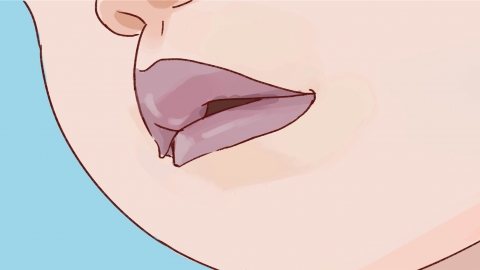How come the lips turn blue during altitude sickness, and what should be done?
In general, purple lips caused by altitude reaction may be due to cold-induced vasoconstriction, hyperventilation-induced respiratory alkalosis, arrhythmia, high-altitude pulmonary edema, acute myocardial infarction, and other causes. Treatment options include general treatment and medication, under a doctor's guidance. Detailed analysis is as follows:

1. Cold-induced vasoconstriction
Temperatures are low in high-altitude areas. Cold stimulation causes surface blood vessels to constrict in order to reduce heat loss. When blood vessels in the lips constrict, blood flow slows, and oxygen consumption in local tissues relatively increases, further worsening local hypoxia, which leads to purple lips. It is important to keep warm in high-altitude areas, wear masks and scarves, avoid exposure to cold environments, and especially protect the head, face, and limbs.
2. Hyperventilation-induced respiratory alkalosis
When initially arriving at high altitude, the body instinctively increases respiratory rate to obtain more oxygen, which can lead to hyperventilation. Hyperventilation expels excessive carbon dioxide from the body, causing respiratory alkalosis, which subsequently causes peripheral vasoconstriction, reducing blood perfusion to areas such as the lips. Alkalosis also affects the dissociation of hemoglobin from oxygen, worsening tissue hypoxia and causing purple lips. Maintain a steady breathing rhythm, regulate breathing through deep or slow breathing, and avoid hyperventilation.
3. Arrhythmia
Hypoxia and mental stress at high altitudes can induce abnormal electrophysiological activity in myocardial cells, leading to arrhythmia. Arrhythmia causes abnormal cardiac pumping function, reduced cardiac output, circulatory dysfunction, and prevents sufficient oxygen-rich blood from reaching peripheral tissues, including the lips, resulting in purple lips. Symptoms such as palpitations and chest tightness may also occur. Treatment may include medications such as verapamil hydrochloride injection, lidocaine hydrochloride injection, and Wenxin Granules, as directed by a physician.
4. High-altitude pulmonary edema
High-altitude pulmonary edema occurs due to pulmonary vasoconstriction caused by hypoxia at high altitudes, increased pulmonary circulation resistance, increased capillary permeability, and fluid leakage into alveoli and lung interstitium. Gas exchange function in the lungs is severely impaired, oxygen cannot effectively enter the bloodstream, and carbon dioxide excretion is obstructed, leading to severe hypoxemia and purple lips. Symptoms such as dyspnea and cough may also occur. Treatment may include medications such as furosemide injection, aminophylline injection, and dexamethasone sodium phosphate injection, as directed by a physician.
5. Acute myocardial infarction
Oxygen levels are low at high altitudes, increasing the heart's oxygen demand, while coronary blood supply becomes relatively insufficient. Patients with underlying conditions such as pre-existing coronary atherosclerosis are prone to coronary artery blockage, leading to myocardial ischemia and necrosis. Myocardial contractility decreases, cardiac pumping function is impaired, circulatory dysfunction occurs, and myocardial hypoxia can cause complications such as arrhythmia, further worsening the condition and causing purple lips. Severe chest pain and chest tightness may also occur. Treatment may include medications such as aspirin enteric-coated tablets, clopidogrel bisulfate tablets, and atorvastatin calcium tablets, as directed by a physician.
After arriving at high altitude, avoid strenuous exercise and rapid ascent, allow the body sufficient time to adapt to the high-altitude environment, and follow the principle of "walk slowly, drink plenty of water, and talk less."







